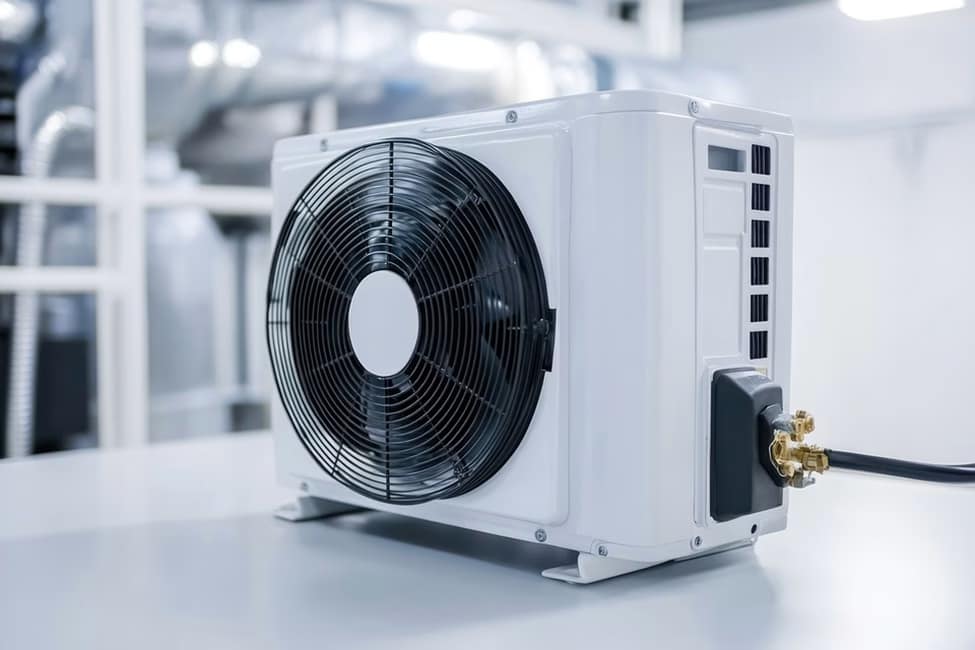Last Updated on May 28, 2025 by SampleBoard
Energy-efficient HVAC design isn’t just about cutting costs. It’s a smart way to reduce environmental impact while improving indoor comfort.
Homeowners now seek solutions that blend functionality with style, pushing HVAC professionals to think beyond basic installations.
Thoughtful planning can transform any space into one that seamlessly balances airflow, temperature control, and energy use.
This article explores several actionable tips to help technicians create such efficient environments without compromising aesthetics.


Ducts carry air, but their placement determines how effectively that air reaches every corner of a home.
Poorly planned layouts often result in hot or cold spots, forcing HVAC systems to work harder than necessary.
When planning duct routes, focus on minimizing twists and turns.
Straight, short paths reduce air resistance and improve pressure balance across rooms.
Strategic vent positioning matters, too. Supply vents should complement return vents to maintain smooth circulation.
Preferably, place them where airflow won’t be obstructed by furniture or walls for maximum efficiency and comfort throughout the space.

Different areas of a home often have varying heating and cooling needs.
A single thermostat struggles to maintain comfort everywhere, leading to energy waste and uneven temperatures.
Zoning systems solve this issue by dividing the home into separate zones with individual controls.
Each zone uses dampers in the ductwork to regulate airflow based on specific preferences or room usage patterns. For instance, bedrooms may require less cooling during daytime hours.
Integrating zoning systems also boost comfort levels.
Clients will appreciate having tailored climate control that suits their routines without straining HVAC equipment unnecessarily.

HVAC systems alone shouldn’t carry the entire burden of maintaining air quality.
Homes designed with natural ventilation can reduce system demand while keeping energy usage low.
Strategically placed windows, vents, or skylights can promote cross-ventilation.
This setup allows fresh air to flow through the home while pushing stale air out, especially during mild weather.
It would help to place intake points near cooler, shaded areas to maximize airflow efficiency.
Features like operable windows or vented skylights support passive cooling, especially in warmer months.
Another key factor in designing HVAC-efficient spaces is the quality of insulation.
Proper insulation minimizes heat loss in winter and keeps cool air inside during summer, which helps maintain a consistent temperature.
Focus on high R-value materials for walls, roofs, and floors to enhance energy efficiency.
Ensure windows are double or triple-glazed to prevent drafts and reduce thermal bridging.
Effective insulation works hand-in-hand with HVAC systems, allowing them to operate more efficiently while decreasing energy bills.
Modern HVAC systems benefit greatly from smart thermostats.
These devices optimize energy use by automatically learning patterns and adjusting temperatures, making climate control more precise.
Many models allow users to create schedules or make real-time adjustments through smartphone apps.
Homeowners can lower energy consumption during unoccupied hours without sacrificing comfort when they return.
Smart thermostats also integrate seamlessly with zoning systems.
They help fine-tune temperature settings for each zone, enhancing overall efficiency.
When selecting equipment, prioritize models with high Seasonal Energy Efficiency Ratio (SEER) or Annual Fuel Utilization Efficiency (AFUE) ratings.
These systems provide better performance while consuming less energy.
Energy-efficient models come with advanced features like variable-speed motors or dual-stage compressors.
These components adjust output to match real-time heating or cooling needs.
Besides saving energy costs, efficient systems reduce wear and tear by operating more smoothly over time.
They also align with green building standards, appealing to eco-conscious clients.
Keeping up with new technology ensures your expertise stays relevant.
Emerging trends, like smart home integrations and energy-efficient designs, demand updated knowledge for effective implementation.
Hands-on training programs or certifications focused on advanced HVAC systems can sharpen your abilities.
Online courses also offer flexible options to expand skills without disrupting work schedules.
If you're seeking targeted resources, there is more information here to guide you toward specialized learning paths.
Even beginners can gain an edge with foundational training tailored to current market demands.

Improving your home’s HVAC system is a smart move for both comfort and energy efficiency. Still, the cost can be a hurdle for many homeowners.
The good news is that there are financing options out there specifically designed to make these kinds of upgrades more accessible.
HVAC financing can help you find affordable ways to pay and the best heating and air conditioning system based on your local climate and the size and layout of your house."
Crafting HVAC-efficient spaces blends technical know-how with creative problem-solving.
Every design choice shapes comfort, sustainability, and long-term energy savings for homeowners.
With the right tools and training, technicians have a chance to not just meet client needs but exceed them in unexpected ways.
Your expertise drives the shift toward smarter, greener homes.